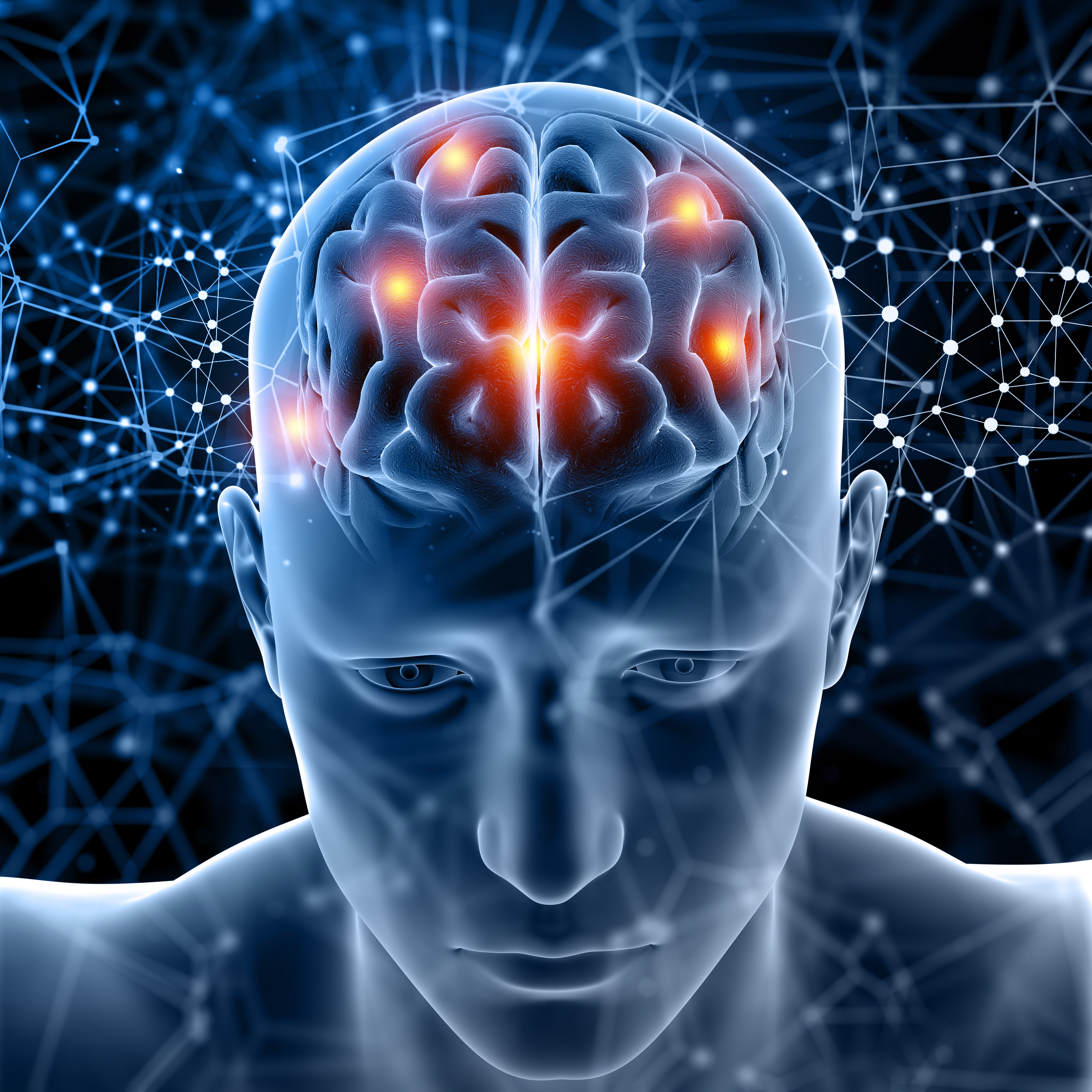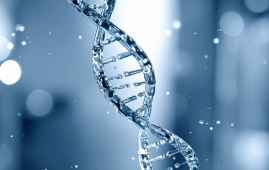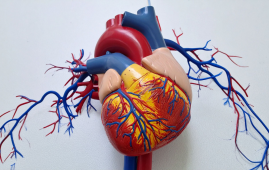

Powerful magnetic pulses delivered to the scalp to stimulate the brain can provide immediate relief to many severely depressed people for whom normal treatments have failed. However, it remains unknown how transcranial magnetic stimulation, as the treatment is known, alters the brain to alleviate depression. Stanford Medicine experts have discovered that the therapy works by reversing the direction of aberrant brain messages.
The findings also imply that backward streams of neural activity between important parts of the brain could be utilized as a diagnostic to help detect depression.
“The leading hypothesis has been that TMS could change the flow of neural activity in the brain,” said Anish Mitra, MD, PhD, a postdoctoral fellow in psychiatry and behavioral sciences. “But to be honest, I was pretty skeptical. I wanted to test it.”
Mitra had the perfect instrument for the job. He devised a mathematical technique to interpret functional magnetic resonance imaging or fMRI, while a graduate student at Washington University in Saint Louis in the group of Mark Raichle, MD. The new technique analyzed minute changes in timing between various areas’ activation to indicate the direction of that activity.
Mitra and Raichle collaborated with Nolan Williams, MD, associate professor of psychiatry and behavioral sciences, whose team has advanced the use of magnetic stimulation, personalized to each patient’s brain anatomy, to treat profound depression in the new study, published May 15 in the Proceedings of the National Academy of Sciences. Stanford neuromodulation therapy is an FDA-approved treatment that uses modern imaging technologies to guide stimulation with high-dose patterns of magnetic pulses that can modulate brain activity associated with serious depression. In contrast to standard TMS, which requires daily sessions over several weeks or months, SNT operates on a five-day timeframe with 10 sessions per day.
“This was the perfect test to see if TMS has the ability to change the way that signals flow through the brain,” said Mitra, who is lead author of the study. “If this doesn’t do it, nothing will.” Raichle and Williams are senior authors of the study.
The Importance of Timing Cannot be Overstated
The researchers enlisted the help of 33 individuals diagnosed with treatment-resistant severe depression. Twenty-three patients got SNT treatment, while ten received a sham treatment that mimicked SNT but did not include magnetic stimulation. They compared the data from these individuals to those of 85 healthy controls who were not depressed.
One relationship jumped out when they examined fMRI data from all around the brain. In the normal brain, the anterior insula, which integrates physiological sensations, sends messages to the anterior cingulate cortex, which governs emotions.
“You could think of it as the anterior cingulate cortex receiving this information about the body — like heart rate or temperature — and then deciding how to feel on the basis of all these signals,” Mitra said.
The typical flow of activity was reversed in three-quarters of the depressed participants: the anterior cingulate cortex delivered signals to the anterior insula. The greater the severity of the depression, the greater the fraction of signals that traveled in the wrong direction.
“What we saw is that who’s the sender and who’s the receiver in the relationship seems to really matter in terms of whether someone is depressed,” Mitra said.
“It’s almost as if you’d already decided how you were going to feel, and then everything you were sensing was filtered through that,” he said. “The mood has become primary.”
“That’s consistent with how a lot of psychiatrists see depression,” he added. “Even things that are quite joyful to a patient normally are suddenly not bringing them any pleasure.”
When depressed patients were treated with SNT, the flow of brain activity returned to normal within a week, corresponding with the patients’ depression lifting.
Those suffering from the most severe depression — as well as the most misdirected brain signals — were the most likely to gain from the treatment.
“We’re able to undo the spatio-temporal abnormality so that people’s brains look like those of normal, healthy controls,” Williams said.
A Biomarker for Depression
One of the difficulties in treating depression has been a lack of understanding of its molecular processes. If a patient develops a fever, different tests — for a bacterial or viral illness, for example — might be performed to establish the best course of therapy. However, there are no comparable tests for a patient suffering from depression.
“This is the first time in psychiatry where this particular change in a biology — the flow of signals between these two brain regions — predicts the change in clinical symptoms,” Williams said.
Not everyone with depression has this abnormal flow of neural activity, and it may be rare in less severe cases of depression, Williams said, but it could serve as an important biomarker for triaging treatment for the disorder. “The fMRI data that allows precision treatment with SNT can be used both as a biomarker for depression and a method of personalized targeting to treat its underlying cause,” he said.
“When we get a person with severe depression, we can look for this biomarker to decide how likely they are to respond well to SNT treatment,” Mitra said.
“Behavioral conditions like depression have been difficult to capture with imaging because, unlike an obvious brain lesion, they deal with the subtlety of relationships between various parts of the brain,” said Raichle, who has studied brain imaging for more than four decades. “It’s incredibly promising that the technology now is approaching the complexity of the problems we’re trying to understand.
The researchers plan to replicate the study in a larger group of patients. They also hope others will adopt their analytic technique to uncover more clues about the direction of brain activity hidden in fMRI data. “As long as you have good clean fMRI data, you can study this property of the signals,” Mitra said.
more recommended stories
 Fat-Free Mass and Brain Outcomes in Preterm Babies
Fat-Free Mass and Brain Outcomes in Preterm BabiesEarly Fat-Free Mass May Hold the.
 How Hormones Shape Dopamine-Driven Learning
How Hormones Shape Dopamine-Driven LearningNYU Study on Hormones and Cognitive.
 Protein Pair Guides Chromosome Alignment in Mitosis
Protein Pair Guides Chromosome Alignment in MitosisKey Points A joint research team.
 Intensive mind-body retreat rapidly alters brain function
Intensive mind-body retreat rapidly alters brain functionAn intensive mind-body retreat combining meditation,.
 Citrus and Grape Compounds Help Prevent Type 2 Diabetes
Citrus and Grape Compounds Help Prevent Type 2 DiabetesA new clinical trial highlights the.
 Personalized Pain Care Transforms Parkinson’s Treatment
Personalized Pain Care Transforms Parkinson’s TreatmentNew UniSA research underscores the urgent.
 Genetic Diversity Explains Obesity Risk Differences
Genetic Diversity Explains Obesity Risk DifferencesCross-ancestry Study Identifies Novel Obesity Genes.
 Meniscal Tear and OA Pain Improved by Home Exercise
Meniscal Tear and OA Pain Improved by Home ExerciseHome Exercise Proves Effective for Knee.
 AI ECG Model Outperforms Standard STEMI Triage
AI ECG Model Outperforms Standard STEMI TriageNovel AI ECG Model Outperforms Standard.
 New Software Transforms Real-Time Pathogen Surveillance
New Software Transforms Real-Time Pathogen SurveillanceReal-Time Pathogen Surveillance Software Transforms Environmental.

Leave a Comment